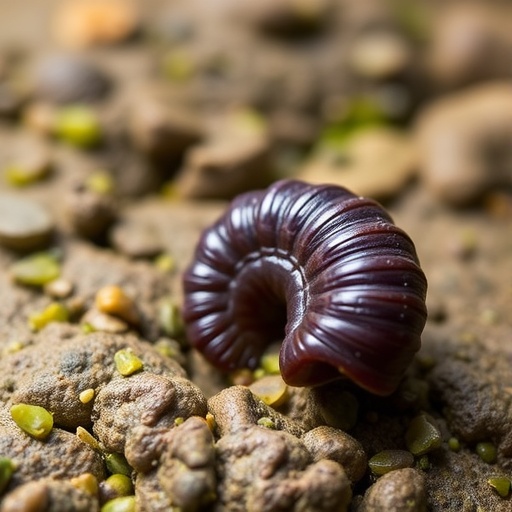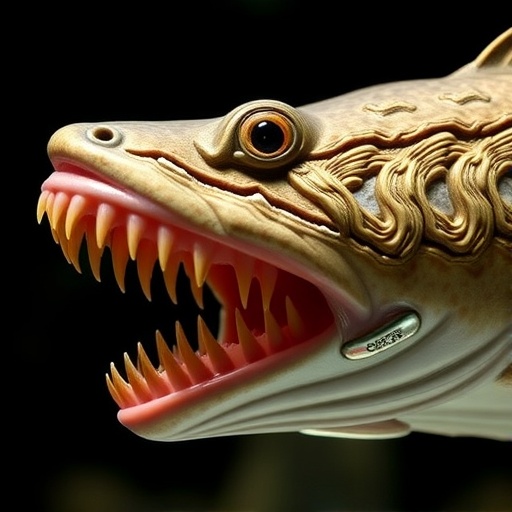
In recent times, a groundbreaking research initiative has emerged from Denmark, shedding light on the often-overlooked but fascinating world of tardigrades, particularly those residing within cryptogams. A team of researchers, including prominent scientists such as GÄ siorek, Sørensen, and Lillemark, embarked on an ambitious project that not only engaged the scientific community but also galvanized citizen scientists to participate in the exploration of these minuscule creatures. Their findings have been published in the journal Front Zool, where they detail a comprehensive inventory of Danish cryptogam-dwelling tardigrade fauna, showcasing the rich biodiversity of these microscopic organisms.
The allure of tardigrades, commonly known as “water bears,” stems from their remarkable resilience and adaptability. Found in myriad environments, these creatures can survive extreme conditions that would be lethal to most forms of life. They have captured the interest of scientists and the public alike, owing to their ability to endure desiccation, extreme temperatures, and even high levels of radiation. This research highlights the importance of studying tardigrades, especially within the context of cryptogamsâplants like mosses and lichens that create microhabitats for these organisms.
The study’s inception can be traced back to the innovative approach adopted by the research team. By employing a massive citizen science sampling strategy, they were able to gather a wealth of data that would have been impractical for a small team to collect independently. This strategy not only amplified the scope of the research but also fostered community engagement, enabling individuals from various backgrounds to contribute to scientific inquiries. The results from this collaborative effort reveal the latent potential of citizen science as a valuable tool in biodiversity assessment.
The researchers utilized an integrated taxonomic approach, combining morphological, genetic, and ecological analyses to identify and classify the tardigrades discovered in Denmark. By employing this multifaceted strategy, the team was able to provide a clearer picture of the species diversity and distribution of tardigrades in cryptogamic habitats across the country. This comprehensive methodology mitigates the shortcomings associated with traditional taxonomic practices, which often rely heavily on morphological characteristics alone.
During their extensive fieldwork, the research team meticulously collected samples from various cryptogamic substrates. These included diverse mosses, lichens, and liverworts, which were meticulously examined for the presence of tardigrades. The process involved careful environmental monitoring and the documentation of abiotic factors such as humidity, temperature, and light exposure that could influence the distribution of these microscopic animals. These factors are critical in understanding the ecology of tardigrades and their interactions with surrounding flora.
The effort to inventory the tardigrade fauna has resulted in the identification of an astounding number of species previously undocumented in Danish ecosystems. The findings contribute significantly to the existing body of knowledge on tardigrades, providing important insights into their ecological roles, life cycles, and evolutionary adaptations. Several species identified in the study hold implications for understanding broader ecological dynamics, as they can serve as indicators of environmental health due to their sensitivity to ecological changes.
Furthermore, the research underscores the significance of preserving cryptogamic habitats, which are vital ecosystems supporting not only tardigrades but also countless other organisms. The intricate relationship between tardigrades and their cryptogamic dwelling environments emphasizes the ecological interconnectedness that underpins biodiversity. As such, safeguarding these habitats is critical in the face of environmental challenges such as climate change and habitat destruction.
The collaboration between professional scientists and citizen scientists represents a paradigm shift in how biodiversity research can be conducted. By maximizing public involvement, the researchers not only gathered extensive data but also cultivated a sense of stewardship among participants, potentially inspiring future generations to engage in biodiversity conservation efforts. The study exemplifies how citizen science can bridge the gap between academic research and community involvement in environmental science.
As the research has been published, it opens new avenues for further exploration and discussion within the scientific community and beyond. The species list compiled through this study will serve as a foundational resource for future research endeavors in the field of ecological and evolutionary biology. Moreover, it lays the groundwork for potential conservation initiatives aimed at protecting the unique biota found in Denmarkâs cryptogamic ecosystems.
The implications of the study extend beyond national boundaries, as findings regarding cryptogam-dwelling tardigrades can inform global biodiversity assessments. The methodologies developed and employed during the research could be adapted for similar studies in other regions, facilitating broader conservation strategies and the sustainable management of biodiversity.
In conclusion, the research spearheaded by GÄ siorek, Sørensen, Lillemark, and their collaborators marks a significant contribution to the field of cryptobiology, underscoring the richness of Denmarkâs cryptogam-dwelling tardigrade fauna. This pioneering work not only enhances our understanding of tardigrade biodiversity but also showcases the power of citizen science in advancing scientific research. As we continue to unravel the mysteries of these resilient creatures, the hope is that this knowledge will inspire more comprehensive conservation strategies that promote biodiversity and environmental sustainability.
This research serves as a reminder of the wonders that lie within our own backyards, waiting to be discovered through collaboration and scientific inquiry. In an age where ecological awareness is more crucial than ever, initiatives like these act as beacons of hope, demonstrating that collective efforts can yield remarkable insights into the natural world.
Subject of Research: Tardigrades in Danish cryptogams.
Article Title: Massive citizen science sampling and integrated taxonomic approach unravel Danish cryptogam-dwelling tardigrade fauna.
Article References: GÄ siorek, P., Sørensen, M.V., Lillemark, M.R. et al. Massive citizen science sampling and integrated taxonomic approach unravel Danish cryptogam-dwelling tardigrade fauna. Front Zool 21, 27 (2024). https://doi.org/10.1186/s12983-024-00547-x
Image Credits: AI Generated
DOI: 10.1186/s12983-024-00547-x
Keywords: Tardigrades, cryptogams, citizen science, biodiversity, Denmark, ecological research, taxonomic approach, environmental conservation.
Tags: biodiversity of microscopic organismscitizen science in Denmarkcitizen scientists exploring tardigradescollaborative research initiatives in sciencecryptogam-dwelling tardigradesDanish cryptogams and tardigradesextreme survival of tardigradesFront Zool publication on tardigradesGÄ siorek Sørensen Lillemark studyrole of cryptogams in microhabitatstardigrade biodiversity researchwater bears resilience and adaptability




